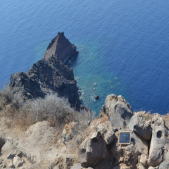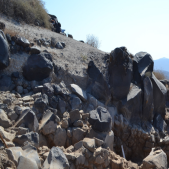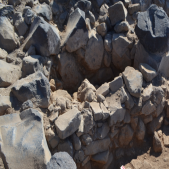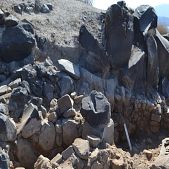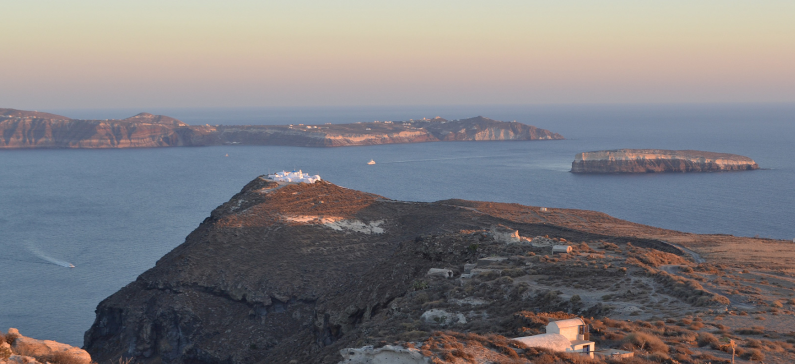
Santorini excavation unearths Bronze Age settlement
Excavation work that was carried out at the Dormition site at the southeastern end of the island of Thirassia, an islet of the Santorini island cluster in Greece, has brought to light a Bronze Age settlement, the Greek culture ministry announced. A section of the settlement was eroded and dragged into the cliff during the geological detachment of the island of Thirassia from Aspronissi as a result of the great volcanic eruption. The Koimisi settlement provides important data into the Thira-Thirassia complex during the early phases of the Bronze Age and also offers insight into the formation of the southeastern boundary of the pre-eruption caldera.
Finds include building foundations as well as construction materials, which provide insight into the way of life during this historical period.Supported by the Thira municipality and the Institute of Aegean Prehistory, this year’s excavations works were jointly carried out by the Ionian University, the University of Crete and the Cyclades Ephorate of Antiquities with the support of Aristotle University of Thessaloniki professor Clairy Palyvos and a multidisciplinary team of archaeologists and researchers. According to the statement by the Ministry of Culture, the excavation brings to light an Early Cycladic and Mesocyclic settlement of the 3rd and the beginning of the 2nd millennium BC, facing the caldera to the east and Aspronisi to the south.
Various media reports note that the settlement of Koimisi provides significant data for the Thera-Thirassia complex during the early phases of the Bronze Age and also gives new information on the shape of the NA boundary of the pre-explosive caldera, at the gradual expanse of which the prehistoric settlement lay.T he work unveiled a particularly interesting man-made occupation of the site with a series of buildings of various designs whose common feature is the exploitation of the rocks and the natural space as a framework and component of the foundations and skeleton of the buildings. Large volcanic rocks emerge across the surface of the relief, define the slopes of the slope, form the surfaces available for construction and are incorporated into the various structures.
The structure is dense and the buildings are estimated to be hooked to each other, with stone platforms between them, which form the stepped slope of the slope.Volcanic materials were also utilized in the construction as a substrate for the floors, while plates from the lower and older geological strata of Thirassia, which should have been visible in the already formed caldera draft, were used as roof tiles. During this year’s excavation, the revelation of an ellipsoid building with monumental features was completed and several floors of the settlement were excavated in successive floors of the Early and Middle Bronze Age, giving significant insights into the organization of the site as well as the succession of habitation phases. The boundaries of the settlement were also investigated at the hillside. Based mainly on ceramics, the settlement goes back to the Early Cycladic II, the Early Cycladic II / III and the Middle Cycladic period, with phases tantamount to Akrotiri. The finds include ceramic, polished and sculpted stone tools, and various housework, bones, shingles, wood and other organic remains.
The material evidence suggest that the economy depended on crops and livestock. The exploration of the technocentes is in progress, but from the multitude of crushing tools and large storage vases, we can conclude that the practice of diversified crops has been the basis of nutrition along with livestock products (milk and meat) and marine resources. The analysis of ceramic clay indicates the importance of local production as well as the presence of imported ceramics from various regions of the Aegean.
The settlement was abandoned for unknown reasons shortly before the Late Cycladic period. When the Minoan eruption and the subsequent cover of the island with layers of volcanic material happened, the settlement had already been abandoned.


